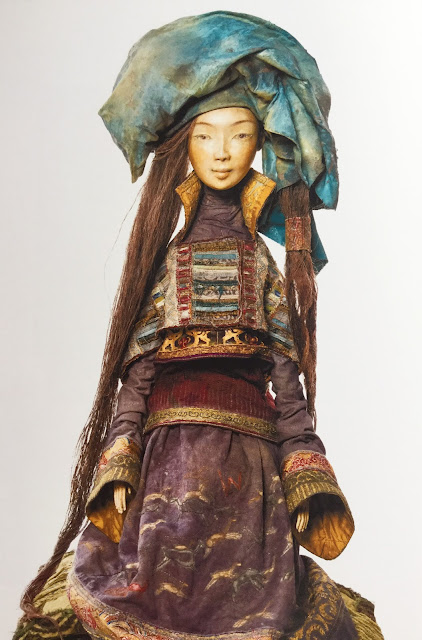I am a massive admirer of Art Dolls. When I mention this frequently to people, they picture me with mass-produced Barbies playing around. Maybe it started like this when I was a little girl making clothes for Barbies and dreaming about a career as a Fashion Designer. Many years passed between my first dresses for Dolls and my Haute couture gowns for real women. I never gave up on my dream. During all these years of my studies to become a Fashion Designer, I learnt a lot about Art, Design, read lots of books and wrote quite a few theses. From the moment I entered the School of Art and Design, the perception of Dolls changed for me forever. They are not toys for me any more, they are Art objects.
With all the modern paintings and other artworks presented in the galleries around the world, this type of Art has a very modest existence. But yet, it has such prominent evidence of craftsmanship and combination of different skills, emphasised by imagination and individuality. Art Dolls for centuries exist in our life in various ways as toys for kids, as symbolic figures in some religions. They are made from clay, wood, bones, metal, silver and even gold. Can a Doll be a piece of Art?
I think in the 21st century when we are taught to think 'outside the box' -
the decision is made individually. There are many artisanal dolls made by talented artists at the moment. My favourite dolls are Namdakov family dolls,
genuinely unique and highly artistic pieces of Art. Dashi Namdakov, Russian sculptor, graphic artist and jeweller, is the genius that creates these mysterious dolls on the paper first. He is internationally recognised sculptor, who has held dozens of exhibitions around the world, from Tokyo and Beijing to New York, London and Los Angeles. While Dashi makes sketches, other members of the family, who are talented artists, work on the structures of the dolls, costumes, wooden accessories and pieces of jewellery. The dolls are inspired by the history and traditions of the Buryat region in Russia. Very exquisite sewing, weaving, embroidery, metal and woodwork techniques are used to produce them. Namdakov dolls are fantasy sculptures, but the use of traditional folk culture helps to connect these dolls deeply to the ethnic values of the Buryat people. National identity is reflected in all details: the cut of the garments for dolls, the design of the jewellery, hairstyles, the use of traditional materials, colour shame and symbolism. Each Namdakov doll is like a poem without words...
Reference: "Ulger. Dolls of the Namdakov family", Exhibition
catalogue, (NP-Print, St.Petesburg, 2018)





